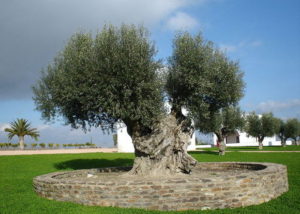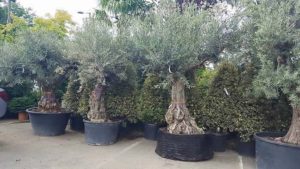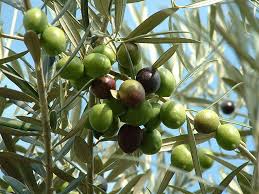 To grow olives, you have to consider what they need the most. Much the same as all other plants and trees, they grow best in certain areas and environments. Olives are more forgiving than most. This means that they can grow in a variety of different areas. However, growing olives up on the mountain may be a little tricky sometimes.
To grow olives, you have to consider what they need the most. Much the same as all other plants and trees, they grow best in certain areas and environments. Olives are more forgiving than most. This means that they can grow in a variety of different areas. However, growing olives up on the mountain may be a little tricky sometimes.
The Best Climate for Olive Trees
 Olive trees generally prefer a dry, well-drained area to thrive in. For this reason, the most perfect area for them is going to be places that do not see a lot of rain. They also prefer areas that have a mild winter, short-lived winter season. However, this can be tricky as well.
Olive trees generally prefer a dry, well-drained area to thrive in. For this reason, the most perfect area for them is going to be places that do not see a lot of rain. They also prefer areas that have a mild winter, short-lived winter season. However, this can be tricky as well.
Olive trees should be planted in the spring. April to June is considered their bloom-season. During this time, there should be very little rain and not uncomfortably hot temperatures. During the bloom season, no rain is optimal because it can interrupt their pollination, which will hinder their blooms. Basically, they do not thrive in areas that are considered more tropical because of the amount of heat and rain that these areas may see during the summer months.
As winter comes, they do need some cold weather. They need the temperatures to drop below 45 °F, but this can change depending on the species of olive tree you have. This cooler weather is what enables the tree to bloom. The thing is, temperatures that drop near 22 °F (−6 °C) can harm smaller branches on the tree. A temperature of 15 °F can kill large branches and the tree as a whole. If you get lucky and the tree does not die, you may still have damage. A single heavy frost can affect the flavor of the olives and the oil can be compromised as well.
Other Considerations for Growing Olives
 For olive trees, the pH balance has to be right. The soil has to be moderately acidic with a pH that is greater than 5, but less than 8.5. If you ask some growers, 6.5 is ideal. Because of this, you will need to have your soil tested if you want to grow trees.
For olive trees, the pH balance has to be right. The soil has to be moderately acidic with a pH that is greater than 5, but less than 8.5. If you ask some growers, 6.5 is ideal. Because of this, you will need to have your soil tested if you want to grow trees.
If you do not have the proper pH levels, you can increase it with limestone or sphagnum moss. If you have too much, then sulfur or pine needles can lower it.
For anyone who wants to eliminate as much of the guesswork as they can, an olive tree soil mix is available. This can help to provide you with a good base for your tree, but you may still need to monitor it to make sure that the right levels are maintained throughout the seasons. You will also need to put more effort into draining the soil properly, especially if you plant your trees in a “bed”.
Where the Olives Grow Best
As a general rule, olives can be grown the best in zones 8-9 in the U.S. However, because there are a variety of species that can be a little more resilient, zones 11-12 are not completely out of the question. If you are unsure whether you live in an area that can grow olives, you may want to visit a farmer’s market or a plant nursery. There are some olive tree species that can grow in the northern U.S. and even mountainous areas.